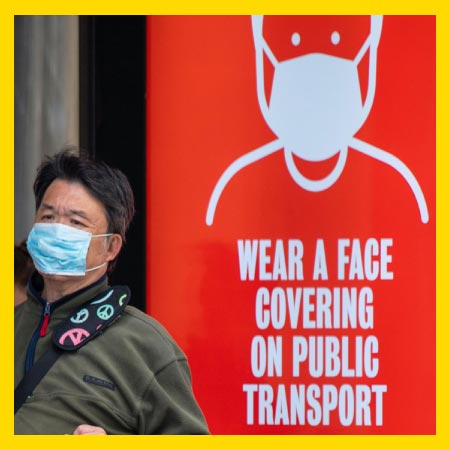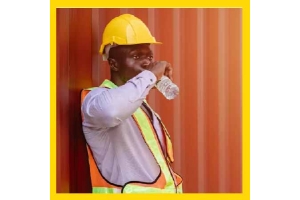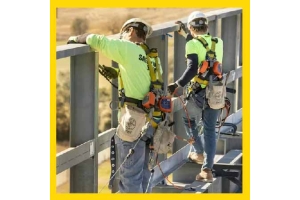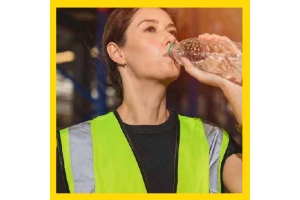Currency
October 18, 2020

Is six feet really the limit for person-to-person COVID-19 transmission?
Unfortunately for businesses, the answer to that question seems to depend on who you ask.
Recently, it may also have depended on when you ask.
On Sept. 18, the CDC posted on its website that the coronavirus is transmitted mainly through the air.
This would mean the virus can travel more than six feet, particularly indoors.
Four days later, the CDC removed the language from its website, saying the post was premature and they were still reviewing the issue.
(Update: On Oct. 5, the CDC updated its webpage on how the coronavirus is spread. “There is evidence that under certain conditions, people with COVID-19 seem to have infected others who were more than six feet away,” the updated Web page states. “These transmissions occurred within enclosed spaces that had inadequate ventilation. Sometimes the infected person was breathing heavily, for example while singing or exercising.”)

Early in the pandemic, “superspreader” incidents were identified, with the implication that certain people infected with the coronavirus were more likely to infect a larger number of people.
Now, a growing number of scientists are looking at these incidents differently: It’s not a person, it’s a building’s poor indoor air circulation that’s the cause of COVID-19 superspreading.
While the CDC makes up its mind on the issue, this summer, more than 200 scientists urged the World Health Organization to seriously consider that the coronavirus can be airborne spread by tinier aerosol droplets for distances greater than the length of an average room, not just larger droplets that travel a maximum of six feet.
ASHRAE, the organization that sets voluntary standards for heating, ventilation and air conditioning (HVAC), says, for the coronavirus, “airborne transmission in some circumstances seems probable.”
On April 14, 2020, ASHRAE adopted a new Position Document on Infectious Aerosols. It states “that facilities of all types should follow, as a minimum, the latest published standards and guidelines and good engineering practice.”
ASHRAE’s coronavirus technical resource page spells out various strategies.
In its coronavirus guideline materials, ASHRAE says no HVAC system can completely eliminate the aerosol transmission of viruses.
On top of that, making certain changes to a building’s HVAC system doesn’t exactly come under the category of “things a safety manager can do today to reduce the hazard of coronavirus spread.”
So, once again, it comes down to the mask.
As a safety pro, you know that PPE is the hazard control of last resort.
However, with the coronavirus still being so new, and because we still don’t know many things about it, this is a situation in which PPE – cloth masks – is a must.
It’s a simple mantra: Wear the mask.
A quote in a New York Times article on the CDC’s apparent flip-flop (at least for now) on the issue, sums it up quite well:
“There is no incontrovertible proof that SARS-CoV-2 travels or is transmitted significantly by aerosols, but there is absolutely no evidence that it’s not,” said Dr. Trish Greenhalgh, a primary care doctor at the University of Oxford in Britain.
“So at the moment we have to make a decision in the face of uncertainty, and my goodness, it’s going to be a disastrous decision if we get it wrong,” she said. “So why not just mask up for a few weeks, just in case?”
Unfortunately for businesses, the answer to that question seems to depend on who you ask.
Recently, it may also have depended on when you ask.
On Sept. 18, the CDC posted on its website that the coronavirus is transmitted mainly through the air.
This would mean the virus can travel more than six feet, particularly indoors.
Four days later, the CDC removed the language from its website, saying the post was premature and they were still reviewing the issue.
(Update: On Oct. 5, the CDC updated its webpage on how the coronavirus is spread. “There is evidence that under certain conditions, people with COVID-19 seem to have infected others who were more than six feet away,” the updated Web page states. “These transmissions occurred within enclosed spaces that had inadequate ventilation. Sometimes the infected person was breathing heavily, for example while singing or exercising.”)

Superspreader buildings?
Early in the pandemic, “superspreader” incidents were identified, with the implication that certain people infected with the coronavirus were more likely to infect a larger number of people.
Now, a growing number of scientists are looking at these incidents differently: It’s not a person, it’s a building’s poor indoor air circulation that’s the cause of COVID-19 superspreading.
While the CDC makes up its mind on the issue, this summer, more than 200 scientists urged the World Health Organization to seriously consider that the coronavirus can be airborne spread by tinier aerosol droplets for distances greater than the length of an average room, not just larger droplets that travel a maximum of six feet.
HVAC experts weigh in
ASHRAE, the organization that sets voluntary standards for heating, ventilation and air conditioning (HVAC), says, for the coronavirus, “airborne transmission in some circumstances seems probable.”
On April 14, 2020, ASHRAE adopted a new Position Document on Infectious Aerosols. It states “that facilities of all types should follow, as a minimum, the latest published standards and guidelines and good engineering practice.”
ASHRAE’s coronavirus technical resource page spells out various strategies.
It all comes back to the mask
In its coronavirus guideline materials, ASHRAE says no HVAC system can completely eliminate the aerosol transmission of viruses.
On top of that, making certain changes to a building’s HVAC system doesn’t exactly come under the category of “things a safety manager can do today to reduce the hazard of coronavirus spread.”
So, once again, it comes down to the mask.
As a safety pro, you know that PPE is the hazard control of last resort.
However, with the coronavirus still being so new, and because we still don’t know many things about it, this is a situation in which PPE – cloth masks – is a must.
It’s a simple mantra: Wear the mask.
A quote in a New York Times article on the CDC’s apparent flip-flop (at least for now) on the issue, sums it up quite well:
“There is no incontrovertible proof that SARS-CoV-2 travels or is transmitted significantly by aerosols, but there is absolutely no evidence that it’s not,” said Dr. Trish Greenhalgh, a primary care doctor at the University of Oxford in Britain.
“So at the moment we have to make a decision in the face of uncertainty, and my goodness, it’s going to be a disastrous decision if we get it wrong,” she said. “So why not just mask up for a few weeks, just in case?”









